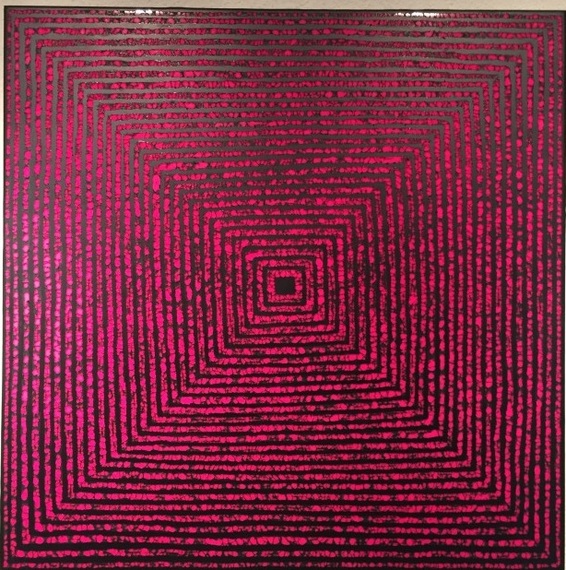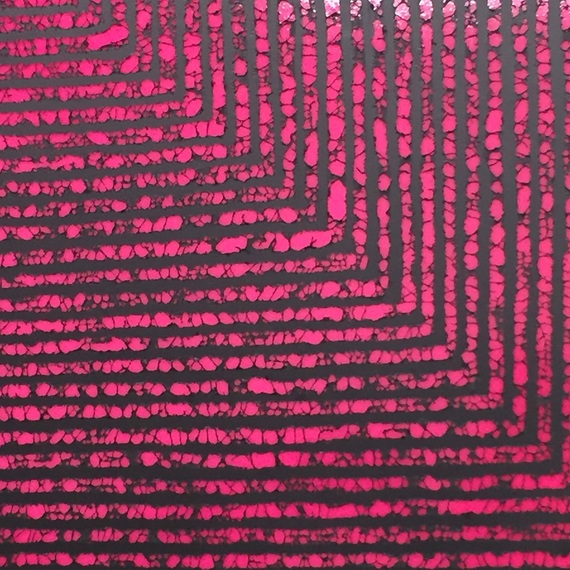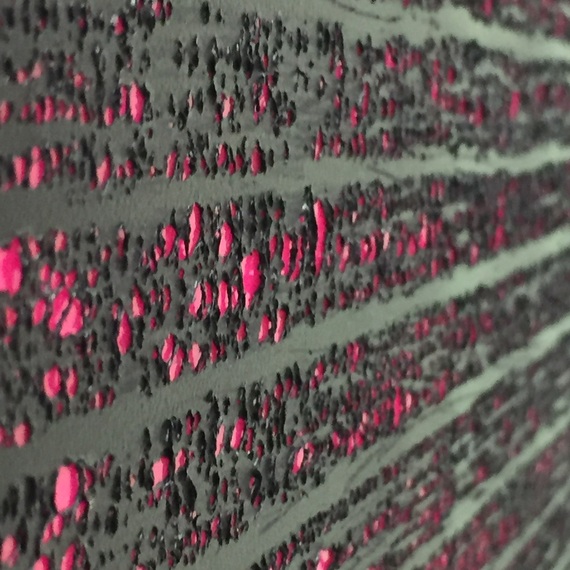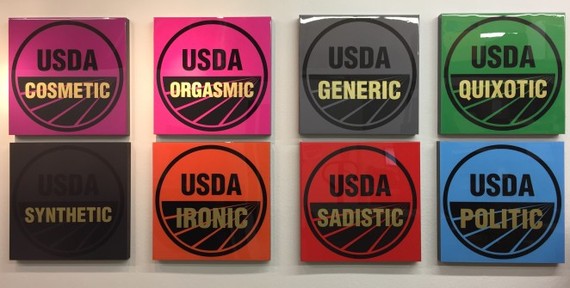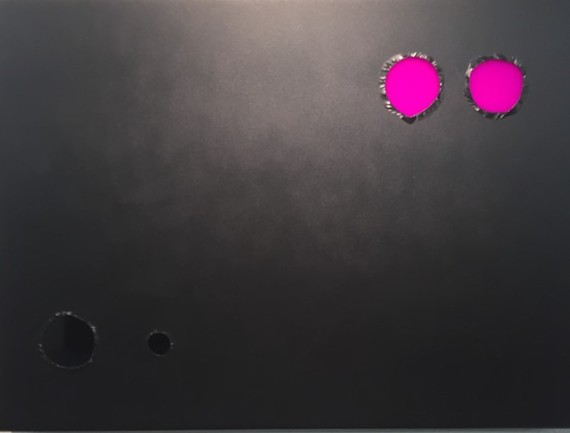Andrew Pasquella's new paintings may not look like a return to basics. Their scored, shredded, black rubber skins are methodically violated by tearing, peeling, and the incisions of hand-held shrapnel scratching them to bits; this fraught erosion revealing shimmering diamond-hard fields of neon color beneath. At once fragile and indestructible, these unsettling, tantalizing, emotional, enigmatic and utterly strange works are anything but simple. Yet while their physical and aesthetic impact is dramatic and visceral, their inception actually represents a paring down of Pasquella's studio practice to a direct, intuitive, transformational new relationship with his materials -- one that privileges the pure urgency of an artist using his hands to make something real. The results are innovative, eccentric, and experiential materials-driven process paintings that reconcile the cheeky artifice of Pop Art polemic and the gestural intimacy of Abstract Expressionist poetry.
His widely known series of satirical USDA logo paintings use the same high-gloss resin as part of a serious message about false advertising, lethal artificiality, and easily distracted consumers. In that modality, a tone of fabricated, industrial perfection serves the work's narrative of seductive inhumanness. But Pasquella is, of course, a human, and an artist, and soon enough he wondered what else his unconventional materials were capable of -- and what else he was capable of doing with them.
He decided to start fresh, to get his hands dirty, to make messes and mistakes, to begin without a plan and proceed from a place of soulfulness and sincerity. By embracing their own paradoxes and taking pride in their scars, they show rather than tell a version of Pasquella's core message, that it is not only possible but imperative to stay human in the midst of troubled times.
It doesn't get any simpler than that.

